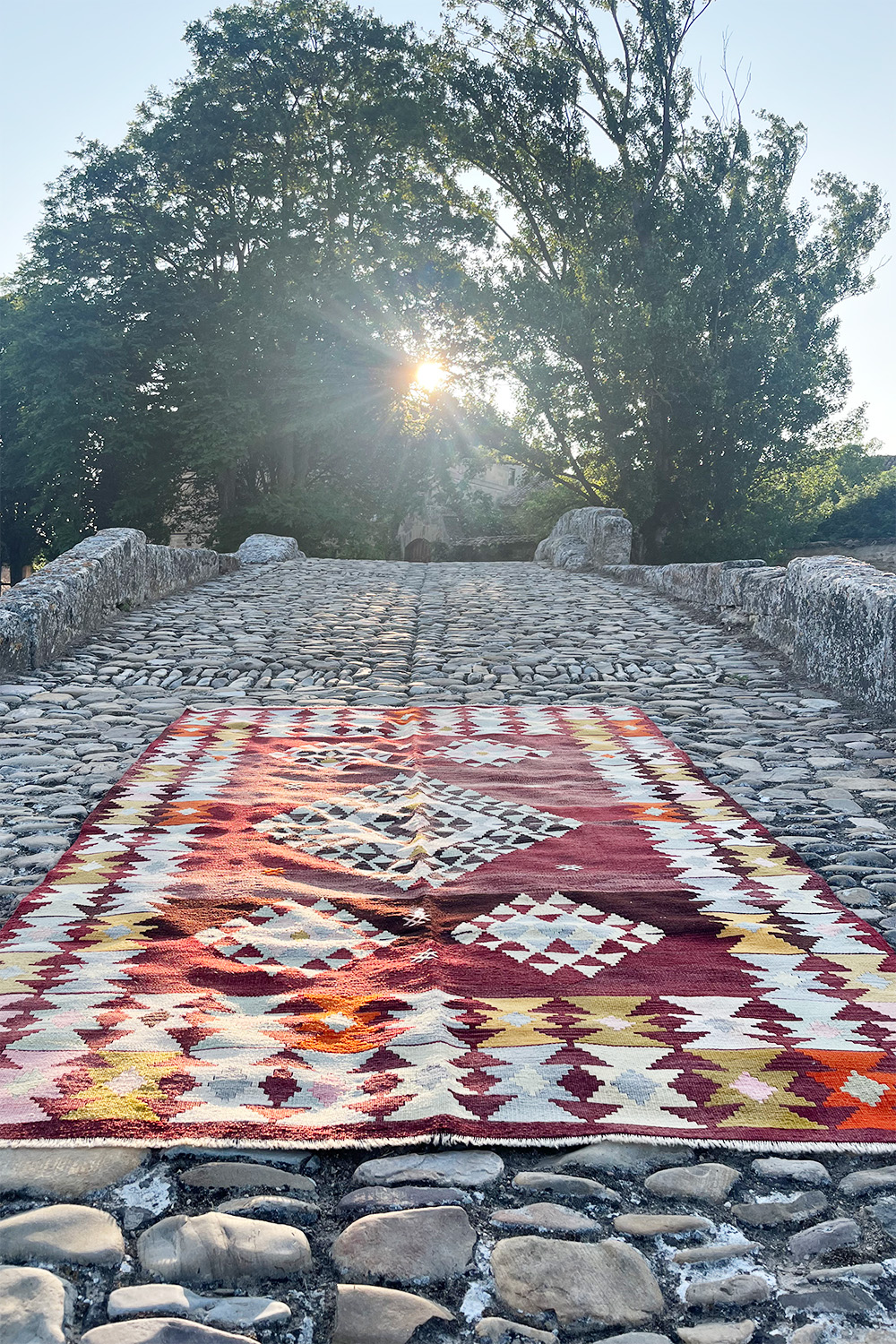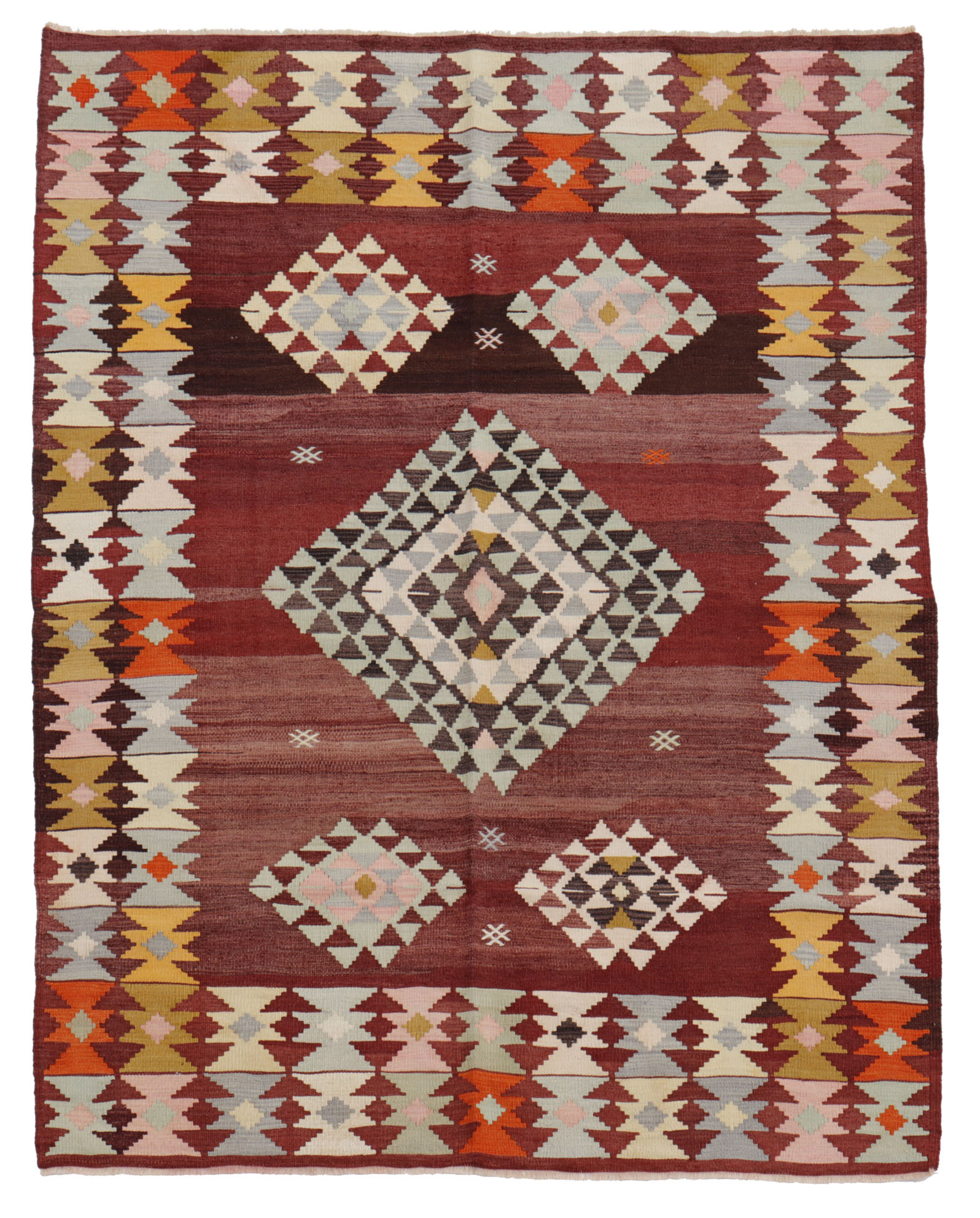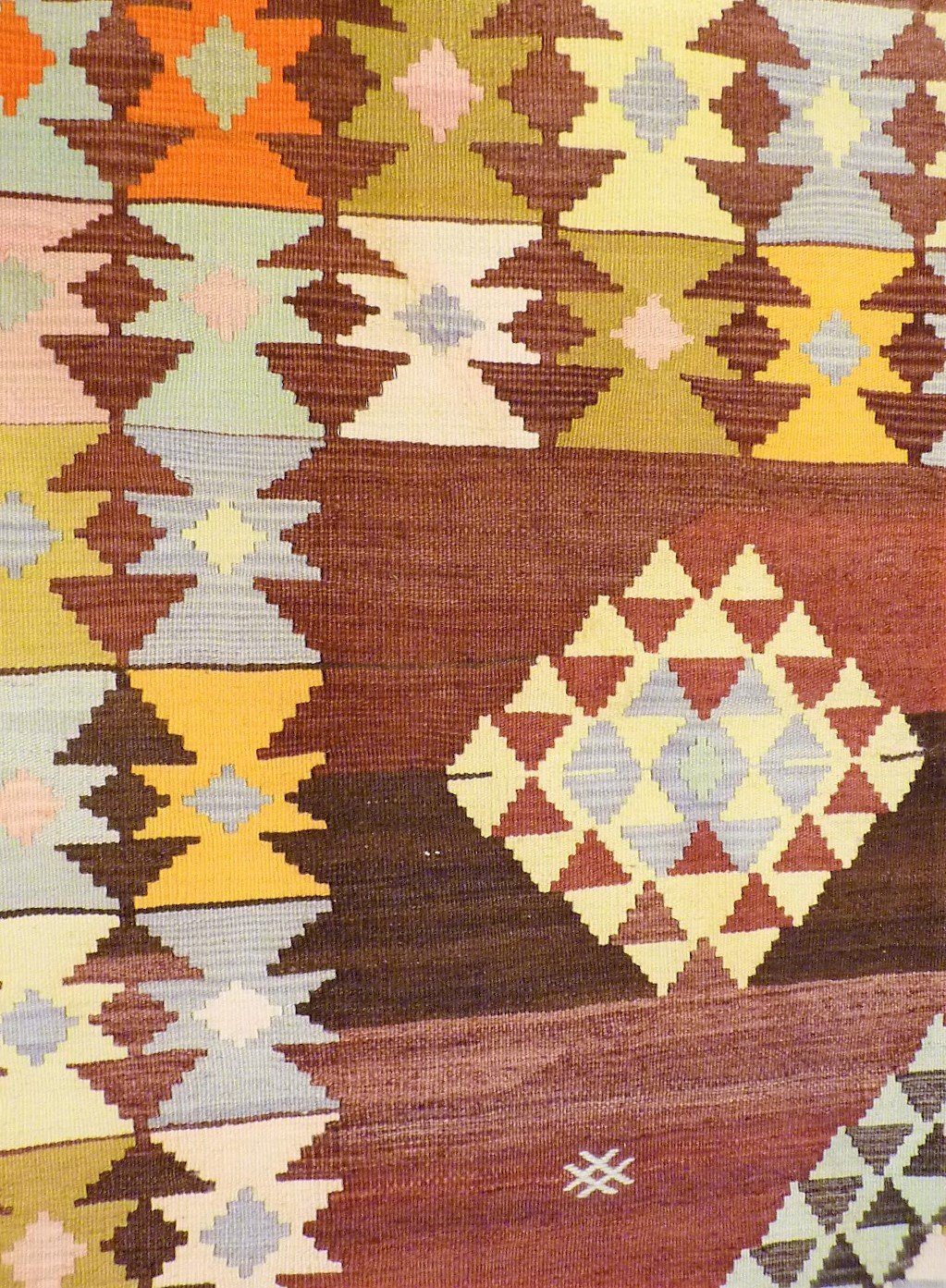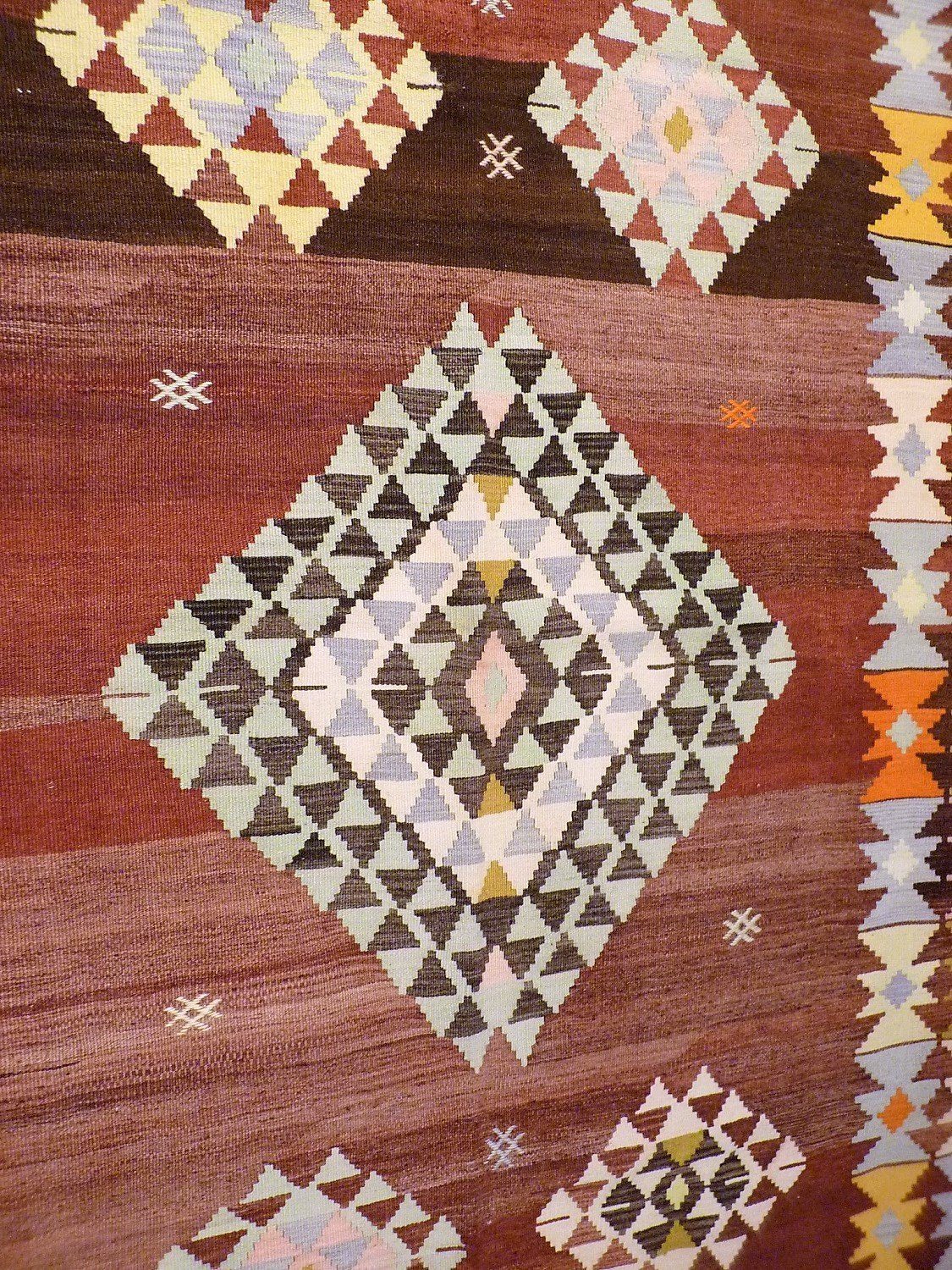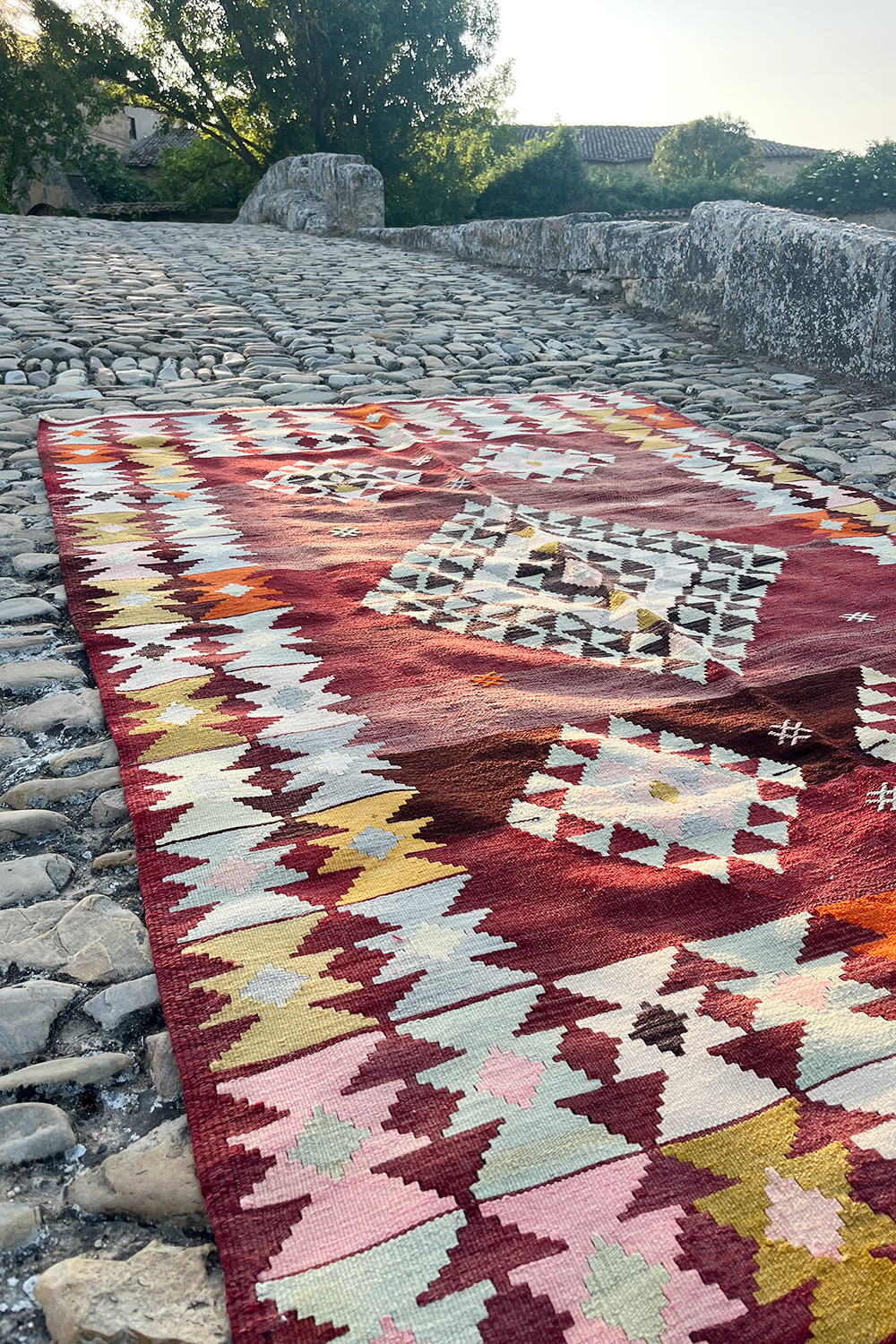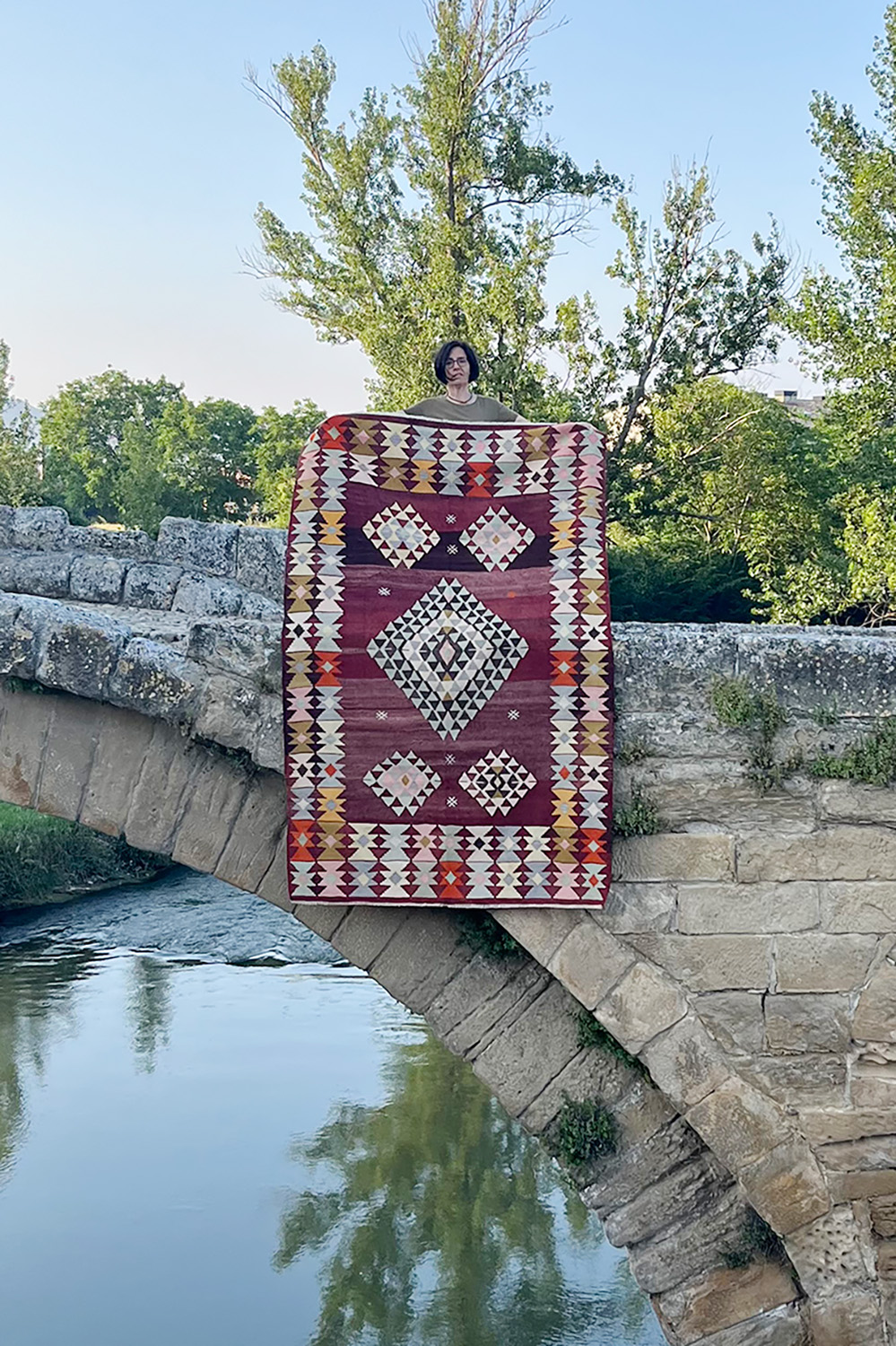1,350.00 € Original price was: 1,350.00 €.1,013.00 €Current price is: 1,013.00 €.
Semi-Antique Kilim from the Mugla Region
This semi-antique kilim from the Mugla region stands out for its elegant design and rich symbolism. At its center, a large medallion is surrounded by four smaller ones, all arranged in a harmonious pattern. What makes this kilim truly unique is its background, which features a beautiful abrash—subtle color variations that add depth and a sense of movement, making the medallions appear to float above the weave.
In the central field, set against a deep burgundy background, the weaver has incorporated delicate thistle motifs, traditional symbols of fertility, crafted using the cicim technique, which enhances the detail of each figure.
The border, composed of two rows of motifs, has a distinctive feature: it doesn’t create a clear separation between the central field and the border. Upon closer inspection, the color of the central field extends towards the edges of the kilim, as if flowing beneath the motifs, naturally merging the structure of the weave.
A true example of the tradition and artistry of the Mugla region, expressed in every detail of this unique kilim.
Material: 100% hand-spun sheep wool
Size: 235×157 cms
Origin: Mugla, Turkey
Date of weaving: 1960s
Kilims or Gilims are flatwoven textiles with a woollen weft on a woollen, goat hair or cotton warp. There are many different techniques and designs. The weaver normally works within a tradition of techniques, motifs and designs specific to a particular area or ethnic group. The designs relate to her natural surroundings, protection, fertility and the harmony of family relationships. Each weaver adds something from her own creativity and sense of composition. Kilims are often woven as part of a marriage dowry and can be used to create many different objects like storage bags, horse-blankets, baby carriers, blankets and wall and floor coverings.
This kilim was hand-woven on a simple loom by a village or nomadic weaver for her own use. Probably the weaver used wool from her own sheep. The wool was first cleaned, then hand-carded, hand-spun and finally dyed by hand, often using natural dye materials like roots, nuts, berries, fruits, flowers and plants. Kilims from the last quarter of the twentieth century mostly use synthetic dyes. This kilim would have taken many months to complete.
All our kilims selected in the country of origin and are professionally washed and restored before we import them directly from Iran, Turkey and Afghanistan. Natural patina and charming imperfections in design and colour (abrash) are highly valued characteristics of hand-woven kilims.
1 in stock
Additional information
| Weight | 6.9 kg |
|---|
Subscribe and receive the lastest news
